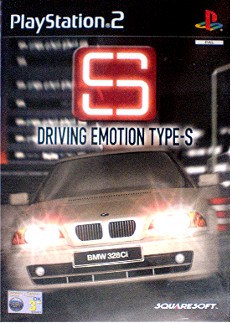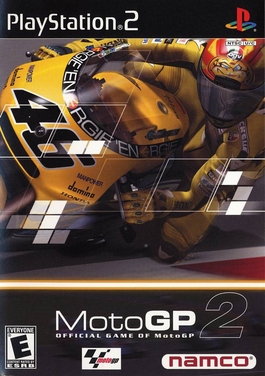Ridge Racer is a racing video game series developed and published for arcade systems and home game consoles by Bandai Namco Entertainment, formerly Namco. The first game, Ridge Racer (1993), was originally released in arcades for the Namco System 22 hardware, later ported to the PlayStation two years later as a launch title. It was met with several sequels and spin-off games for multiple platforms, the latest being the mobile game Ridge Racer Draw & Drift (2016) with the latest mainline game being Ridge Racer 7 (2006). Gameplay involves the player racing against computer-controlled opponents to be the first to finish in a race. Drifting is a core aspect of the series, and is used to keep speed while turning corners.

Midnight Club: Street Racing is a 2000 racing video game developed by Angel Studios and published by Rockstar Games. The game focuses on competitive street racing and the import scene. The game was released for the PlayStation 2 and Game Boy Advance platforms, the former being a launch title for the platform. It is the first game in Midnight Club franchise, followed by Midnight Club II.

4x4 Evo is a video game developed by Terminal Reality for the Windows, Macintosh, Sega Dreamcast, and PlayStation 2 platforms. It is one of the first console games to have cross-platform online play where Dreamcast, Macintosh, and Windows versions of the game appear online at the same time. The game can use maps created by users to download onto a hard drive as well as a Dreamcast VMU. All versions of the game are similar in quality and gameplay although the online systems feature a mode to customize the players' own truck and use it online. The game is still online-capable on all systems except for PlayStation 2. This was Terminal Reality's only video game to be released for the Dreamcast.

Ridge Racer Revolution is a racing video game developed and published by Namco for the PlayStation in 1995. It is the sequel to the PlayStation version of Ridge Racer. Like the original Ridge Racer, the player races computer-controlled cars with the objective of winning a series of races, and supports Namco's NeGcon controller. Ridge Racer Revolution adds two hidden cars, and two-player support via the PlayStation Link cable, and took roughly the same time to develop as the first. The intention was to increase the depth and add features.

R4: Ridge Racer Type 4 is a racing video game developed and published by Namco for the PlayStation. It is the fourth title in the Ridge Racer series after Rage Racer and the last to be released for the PlayStation. It was released on December 3, 1998 in Japan and further released the following year in Europe and North America. It was later re-released on the PlayStation Network in 2011, again in 2023 for PlayStation 4 and PlayStation 5, and pre-loaded on the PlayStation Classic which was released on December 3, 2018. It is the first Ridge Racer series game on the PlayStation to use Gouraud shading on polygons and was followed by Ridge Racer V in 2000.

The NeGcon, stylized as neGcon, is a motion-based game controller manufactured in 1995 by Namco for the PlayStation. One of the first third-party peripherals for the system, the controller is connected by a swivel joint, allowing the player to twist the halves relative to each other. The controller also replaces the "symbol" buttons on the original PlayStation controller with two "A" and "B" buttons, as well as "I" and "II" buttons that allowed for analogue control. A black variant was released exclusively in Japan.

Rage Racer is the third title in the Ridge Racer series of racing games on the PlayStation. Developed and published by Namco, it was released in Japan on December 3, 1996, with releases in the U.S. and Europe following in 1997. It was the first game in the series to feature a CGI animated introduction, and introduced a new "mascot", Reiko Nagase.

Ridge Racer 6 is a racing game by Namco released in 2005. It was the sixth console game in the Ridge Racer series but unlike the previous mainline entries, which were released for PlayStation consoles, this entry was released exclusively as a launch title for the Xbox 360. In a similar fashion to the first Ridge Racer on PS1, Ridge Racer V on PlayStation 2, Ridge Racer(s) on PlayStation Portable and eventually Ridge Racer 7 on PlayStation 3. All are exclusive launch titles for their respective consoles.

Ace Combat 3: Electrosphere is a combat flight simulation video game developed and published by Namco for the PlayStation. The third game in the Ace Combat franchise, it was released in Japan in 1999 and in Europe and North America in 2000. Players control an aircraft and must complete various mission objectives, such as destroying squadrons of enemies or protecting a base from enemy fire.

Lego Racers is a Lego-themed racing video game developed by High Voltage Software and published by Lego Media in 1999.

Ridge Racer 7 is a racing video game developed by Namco Bandai Games for the PlayStation 3. It was released in Japan and North America by Namco Bandai Games in 2006 and PAL territories by Sony Computer Entertainment in 2007. The seventh mainline installment in the Ridge Racer series, it was developed as a launch title for the console. The game has around 40 cars, many of which return from Ridge Racer 6 and the PSP incarnations of the game. There are also 22 courses, available in forward, reverse and mirror mode. The game runs at 1080p native resolution and 60 frames per second. It also features Dolby Digital 5.1 surround sound and free online gameplay via the PlayStation Network.

Ridge Racer, released in Japan as Ridge Racers, is an arcade racing video game developed by Namco for the PlayStation Portable. It is named after the eponymous Ridge Racer video game series to which it belongs. The game was released in Japan on 12 December 2004, in North America on 24 March 2005, and in Europe and Australia on 1 September as a launch title. Available in the game is a fully playable version of the Namco arcade game New Rally-X.

Ridge Racer is a 1993 racing video game developed and published by Namco. It was released initially on the Namco System 22 arcade system board and ported to the PlayStation console in 1994. It is the first title in the Ridge Racer series released for arcades and home consoles.

Ridge Racer 2, released in Japan as Ridge Racers 2, is an arcade-style racing game developed by Namco Bandai Games for the PlayStation Portable hand-held console, marking the 14th release in the Ridge Racer series and also the sequel to the PSP launch title Ridge Racer. It saw release in Japan on 14 September 2006, followed by its 13 October European launch and 19 October release in Australia. The original North American release was cancelled. On 20 December 2022, Ridge Racer 2 was made available worldwide to download on PlayStation 4 and PlayStation 5 as part of the PlayStation Plus Premium subscription service.

Driving Emotion Type-S is a racing game developed by Escape, a subsidiary of Square. It was published in Japan on March 30, 2000 and was Square's first release for the PlayStation 2 console. After criticisms of the game's handling, the international versions feature revised controls and additional contents, and were released in January 2001.
Shinji Hosoe, also known as Megaten and Sampling Masters MEGA, is a Japanese video game composer and musician most famous for scoring Ridge Racer, Street Fighter EX and many Namco arcade games between 1987 and 1996. He also runs the music production and publishing company SuperSweep, alongside long time collaborator Ayako Saso.

Ridge Racer 3D is a racing video game for the Nintendo 3DS console published and developed by Namco Bandai Games. The game was released in Japan on 26 February 2011 and in North America on 22 March, five days prior to the launch of the Nintendo 3DS itself in that region. Ridge Racer 3D was also released in Europe on 25 March and in Australia on 31 March.

MotoGP 3 is a Grand Prix motorcycle racing video game developed and published by Namco for the PlayStation 2. Released in 2003, it is the third game in the Namco series, which coincided with the THQ series for a number of years.

MotoGP 2 is a 2001 racing video game developed and published by Namco for the PlayStation 2. It is an officially licensed MotoGP game. It is a sequel to MotoGP (2000). It was followed by MotoGP 3 in 2003.
Kohta Takahashi is a Japanese composer. He is best known for his work on Namco games, including multiple Ridge Racer and Klonoa titles, as well as Ace Combat 2 and the console version of Tekken 5.

















